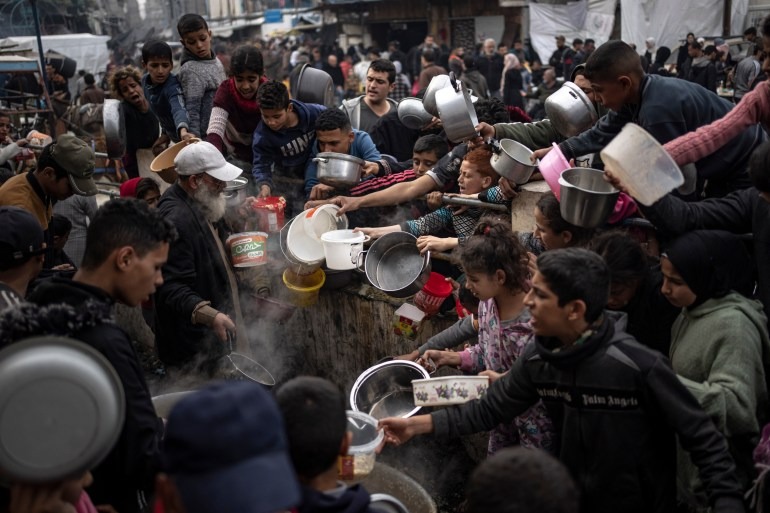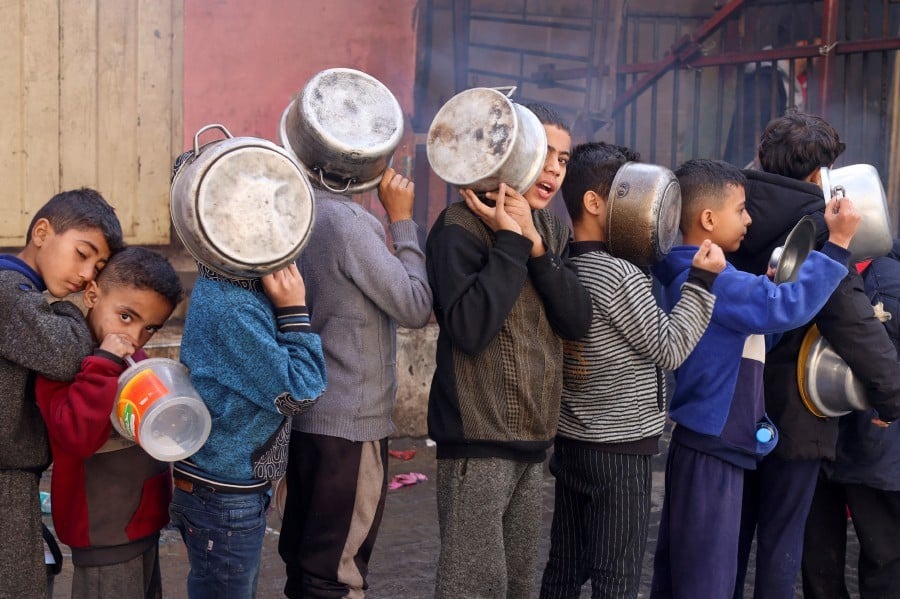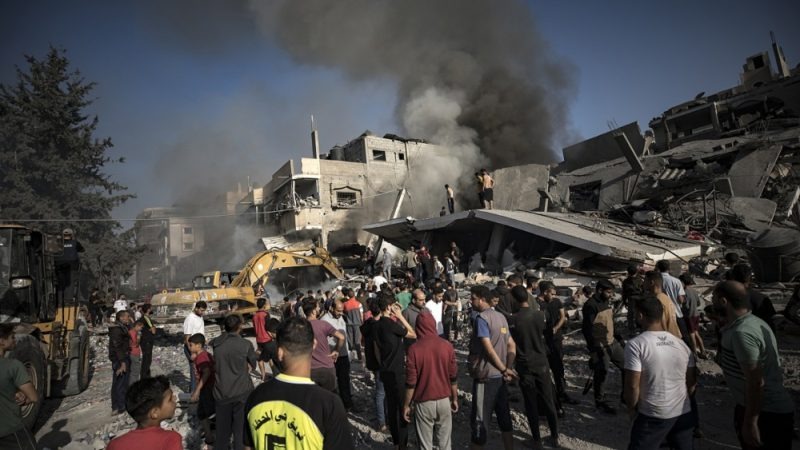Famine feared in Gaza no food, water

UN agencies unite in appeal for Gaza access amid Israeli-Hamas conflict damage.
In Gaza, aid officials observe pockets of famine, as parents prioritize children, an $8 (£6.30) apple, and scarce cooking fuel becoming nearly unattainable.
UN agencies emphasize the critical need for increased humanitarian aid in Gaza, as Palestinian authorities report a death toll exceeding 24,000 during the Israeli offensive.
In a collective statement, the World Food Programme, Unicef, and the World Health Organization stressed the necessity of establishing new entry routes to Gaza. They called for increased daily allowance of trucks, and emphasized the importance of ensuring safe movement for aid workers and those in need of assistance.
While not directly attributing blame to Israel, the UN agencies noted that impediments to aid delivery included insufficiently opened border crossings, a sluggish vetting process for trucks and goods entering Gaza, and ongoing conflict.
Following the militant group’s October 7 attack that claimed 1,200 lives, mostly civilians, Israel initiated a war against Hamas in Gaza. The conflict resulted in extensive damage to large areas of the territory, displacing the majority of Gaza’s 2.3 million population. Many residents, seeking safety, have been compelled to relocate multiple times—up to five, six, or seven instances—resulting in the loss of their possessions and financial resources.
Rafah and Khan Younis in southern Gaza are filled with tents and improvised dwellings, occupying nearly all open spaces. Multiple families are crowded into apartments, residing in UN-managed shelters within schools, or resting on hospital floors. Mohammad Kahil, relocated from northern Gaza to Rafah, expressed the dire conditions, stating, “There’s no food, no water, no heating. We are succumbing to the cold.”
Hussein Awda, 37, escaped from northern Gaza when his house was demolished, and several relatives lost their lives at the start of the conflict.

It’s a nightmare. We manage only one meal a day—just bread with flour and salt. If lucky, we might secure some canned beans through the black market. Otherwise, hunger prevails, Awda shared. He and his family currently reside in a former vocational training school in Khan Younis, which has become the makeshift home for 35,000 displaced individuals.
Additional aid is anticipated, but thus far, we’ve received minimal assistance, limited to some costly fruit. Market shelves remain empty, prompting us to reduce our food intake as uncertainty looms about when more provisions will arrive.
In Gaza, physicians reported instances of children succumbing to hypothermia due to malnutrition, and newborns with undernourished mothers not surviving beyond a few days.
We lack specific figures, but it’s evident that children are losing their lives both due to the dire humanitarian conditions and the direct consequences of the conflict, explained Tess Ingram, a spokesperson for the United Nations Children Fund, currently situated in Rafah.
After three months of war, many displaced individuals are financially drained, unable to afford even essential items for making flatbread. A 25 kg sack of flour now costs $50, marking a sixfold increase from its prewar price, while salt has surged by 1,800%. The sole available fuel is wood sourced from live trees, which burns inefficiently and is costly.
In the northern part of Gaza, where 300,000 people persist amid the ruins, ongoing fighting has complicated access for aid agencies. Aid officials express strong suspicions of “pockets of famine in northern Gaza, although a lack of data on child malnutrition and mortality prevents the fulfillment of formal criteria for declaring a famine. Social media images from Monday depicted hundreds rushing to a truck delivering food.
Very little aid has reached the northern areas, where many people have remained in their homes since the conflict began, according to an official speaking to The Guardian.
On Sunday, the UN reported that fewer than 25% of aid convoys reached their northern destinations in January due to restrictions imposed by Israeli authorities.
Israel, in turn, attributed aid delivery issues to the UN and other organizations, asserting that supplies were accumulating in Gaza.
UN officials countered, stating that while logistical challenges occasionally led to backlogs, their warehouses were nearly empty over the weekend.
Analysts from the Integrated Food Security Phase Classification Initiative (IPC), responsible for assessing famine risk globally for the UN, NGOs, and governments, predict that within three weeks, at least 25% of households in Gaza will experience “an extreme lack of food, starvation, and exhaustion of coping capacities.
In a report released three weeks ago, they further determined that Gaza is on track to have “the highest share of people facing high levels of acute food insecurity…ever classified for any given area or country” by the agency.
On Monday, Palestinian authorities reported that 132 individuals, casualties of Israeli strikes, were brought to Gaza hospitals in the past day, bringing the total death toll since the beginning of the war to 24,100.

According to the health ministry, which doesn’t differentiate between combatants and noncombatants in its count, two-thirds of those killed in the conflict have been women and children.
The Israeli military, on the same day, stated that its forces and aircraft targeted militants in Khan Younis, a focal point of the ground offensive, as well as in northern Gaza, where they claim to be expanding control. The Hamas government’s media office reported damage to two hospitals, a girls’ school, and “dozens” of homes.
On Sunday at al-Aqsa hospital in central Gaza, bodies were stacked on a donkey cart.
Hisham Abu Suweh, waiting outside the emergency ward where his wife was being treated, expressed that his family had believed they would be safe as civilians. “We were sitting peacefully when the missile hit us,” he recounted.
The Israeli military attributes the high civilian death toll to Hamas, alleging that the militant group intentionally operates from civilian facilities and uses the Gaza population as a human shield. Hamas denies this accusation.


